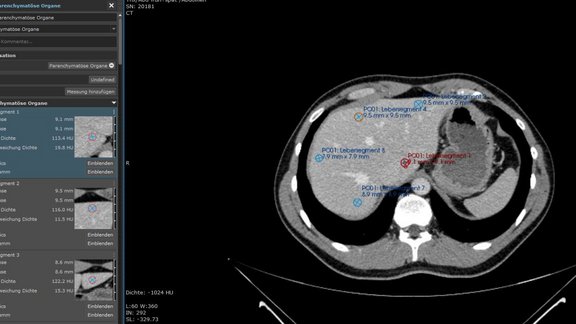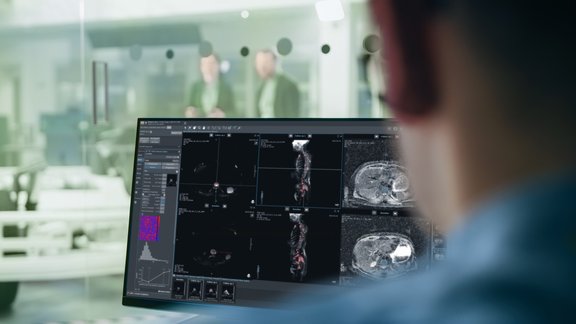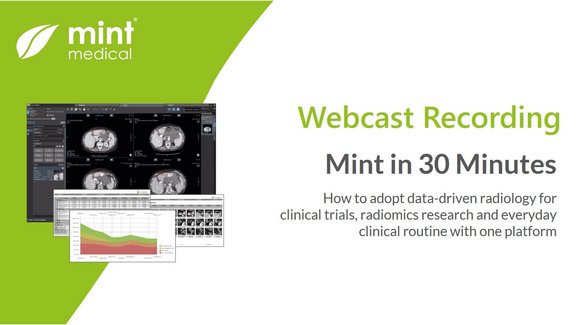Attracting and retaining industry-sponsored clinical trials can be quite appealing for healthcare institutions. Besides obvious financial and reputation benefits, participating in clinical trials gives a site early access to novel breakthrough therapies, makes it an attractive place of work for skilled clinicians, and facilitates higher patient engagement due to higher chances of better patient outcomes. While undertaking clinical trials holds paramount significance in terms of future patient benefits, the administration of such trials consumes a significant amount of physicians' valuable time that could have been otherwise directed towards immediate patient care.
How can one balance delivering quality data to maintain sponsorship while providing exceptional patient care?
Simplifying the adherence to response criteria can ease the mental strain on the study team, enhance data quality and improve the efficiency of clinical trial site reads.
Since evaluation in oncology trials with imaging endpoints must be performed according to specific response criteria, radiologists and study teams conducting clinical trial site reads must ensure that they follow these criteria to the last detail. Of course, when the investigational site runs dozens of trials simultaneously, learning and recalling all the peculiarities of different response criteria rules across indications is challenging. Built-for-purpose software solutions can alleviate this cognitive burden for study teams while enabling efficient workflows and quality data collection.
To facilitate faster and criteria-compliant reads, Mint Medical's software platform mint Lesion™ comes with an extensive library of built-in guidelines for screening, staging, and therapy response evaluation. The software leads the user through each read step-by-step, linking each measurement to the guideline context, thereby ensuring the correctness and high quality of the collected data. In mint Lesion™, all the parameters, including the response criteria, are customized in the system prior to the start of each trial, which significantly saves physicians' time and even provides in-the-moment training.
A solid standardized data entry and reporting practice can reduce errors and increase efficiency.
According to a study conducted in 2019, close to 80% of surveyed CROs and pharma companies named “good data entry, documentation, and reporting practice” one of the most important factors they look for during site selection [1]. And that is no wonder because the way this process is organized directly influences the quality of data the site generates and the capacity of the site's resources. Simply put, the better documentation and reporting processes are functioning, the more time study teams have on their hands. As a result, more clinical trials can be conducted simultaneously with improved quality, and more time can be allocated for patient care.
With mint Lesion™ one can manage patient images, patient cohorts or trials, and assessment workflows from a single application. The software automates image retrieval, automatically derives results such as timepoint response, provides an overview of all cases for each patient and enables seamless communication with all involved stakeholders. Most importantly, mint Lesion™ checks the data conformity at the time of its entry and immediately notifies the user of any inconsistencies. This helps ensure data accuracy and completeness in real-time, which, again, saves time, costs and is critical for successful clinical trial management and accurate analysis of trial results.
Structured reporting is a must.
At the sites where free-text reporting and manual data entry are practiced, documentation of results can become a complex and time-consuming process, prone to errors and interdisciplinary misunderstandings, which in turn result in queries that take valuable time away from patient care. Structured reporting eliminates such misunderstandings, considerably reduces the number of queries, and improves interdisciplinary communication.
For the sponsors and CROs that have experienced structured reporting, there is normally no way back to the manually filled paper case report forms. According to Prof. Ulf Teichgräber, Director of the Institute of Diagnostic and Interventional Radiology at the University Hospital Jena, there has been a significant improvement in communication with sponsors and CROs since the institution started using mint Lesion™ for clinical trials back in 2014.
“It's a paradigm shift. Nowadays, our sponsors, with whom we have been working for many years, especially in oncology studies, approach us directly and ask for the evaluation to be performed with mint Lesion™, because compared to the advantages in terms of quality a manual evaluation by means of any documentation with Excel tables is actually no longer an alternative”, says Prof. Teichgräber[2].
The implementation of dedicated software systems such as mint Lesion™, along with the adoption of structured reporting and standardized data entry practices, can significantly enhance the efficiency of the clinical trial site reads, and improve communication with sponsors. The increased efficiency resulting from the improved practices can, in turn, allow physicians to focus on their patients, providing them with more personalized and comprehensive care, ultimately leading to better health outcomes. While there may be some challenges in transitioning to the new workflows, the benefits are worth the effort. Ultimately, more efficient trials and the high quality of the delivered data will result in better patient outcomes, increased industry interest, and a stronger reputation for the institution.
[1]Dombernowsky, T., Haedersdal, M., Lassen, U. et al. Criteria for site selection in industry-sponsored clinical trials: a survey among decision-makers in biopharmaceutical companies and clinical research organizations. Trials 20, 708 (2019).
[2] Workflow optimization, increased efficiency and reduced errors in clinical trials - Mint Medical GmbH (mint-medical.com), Interview (2021)



